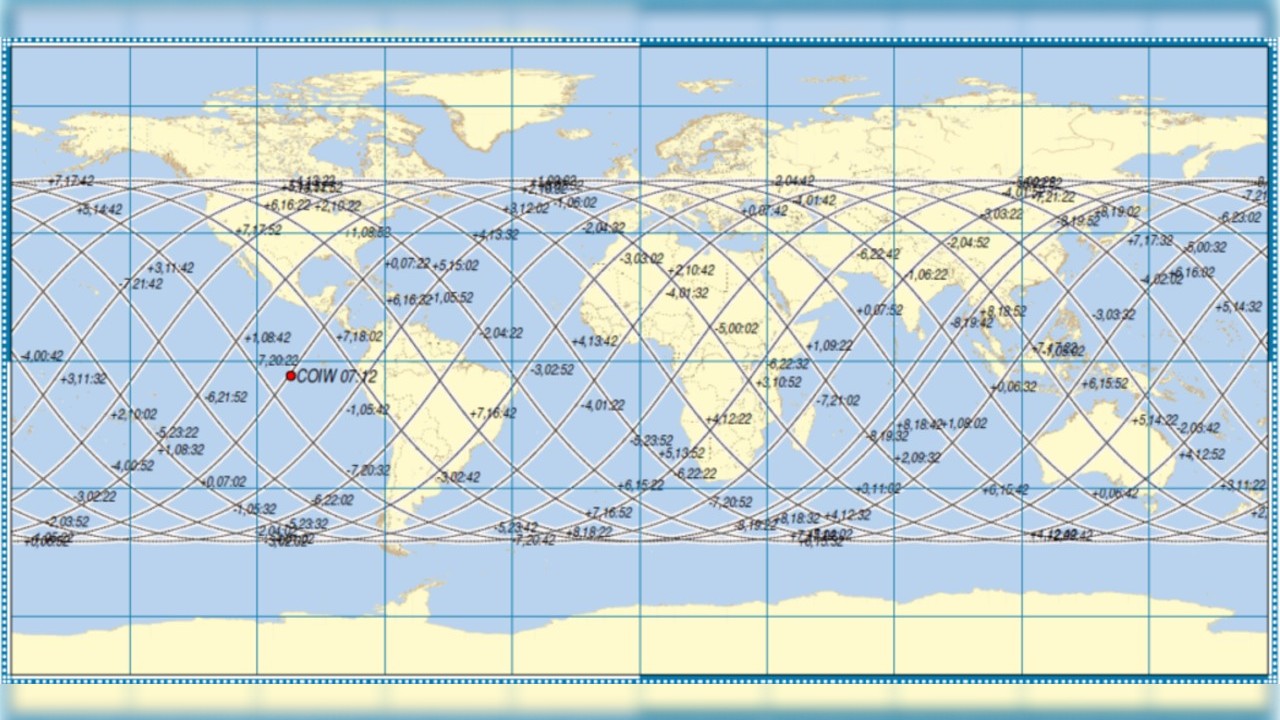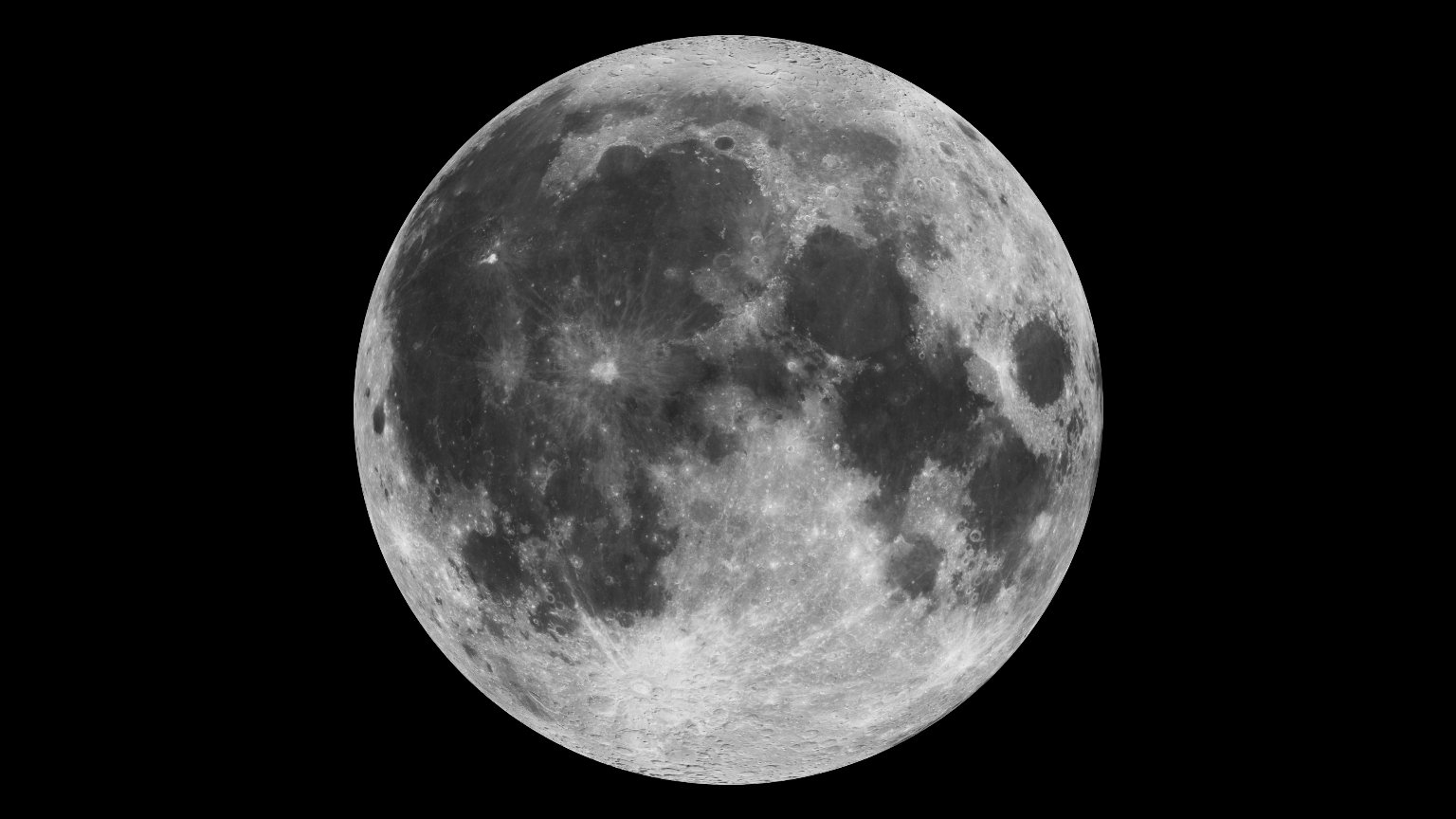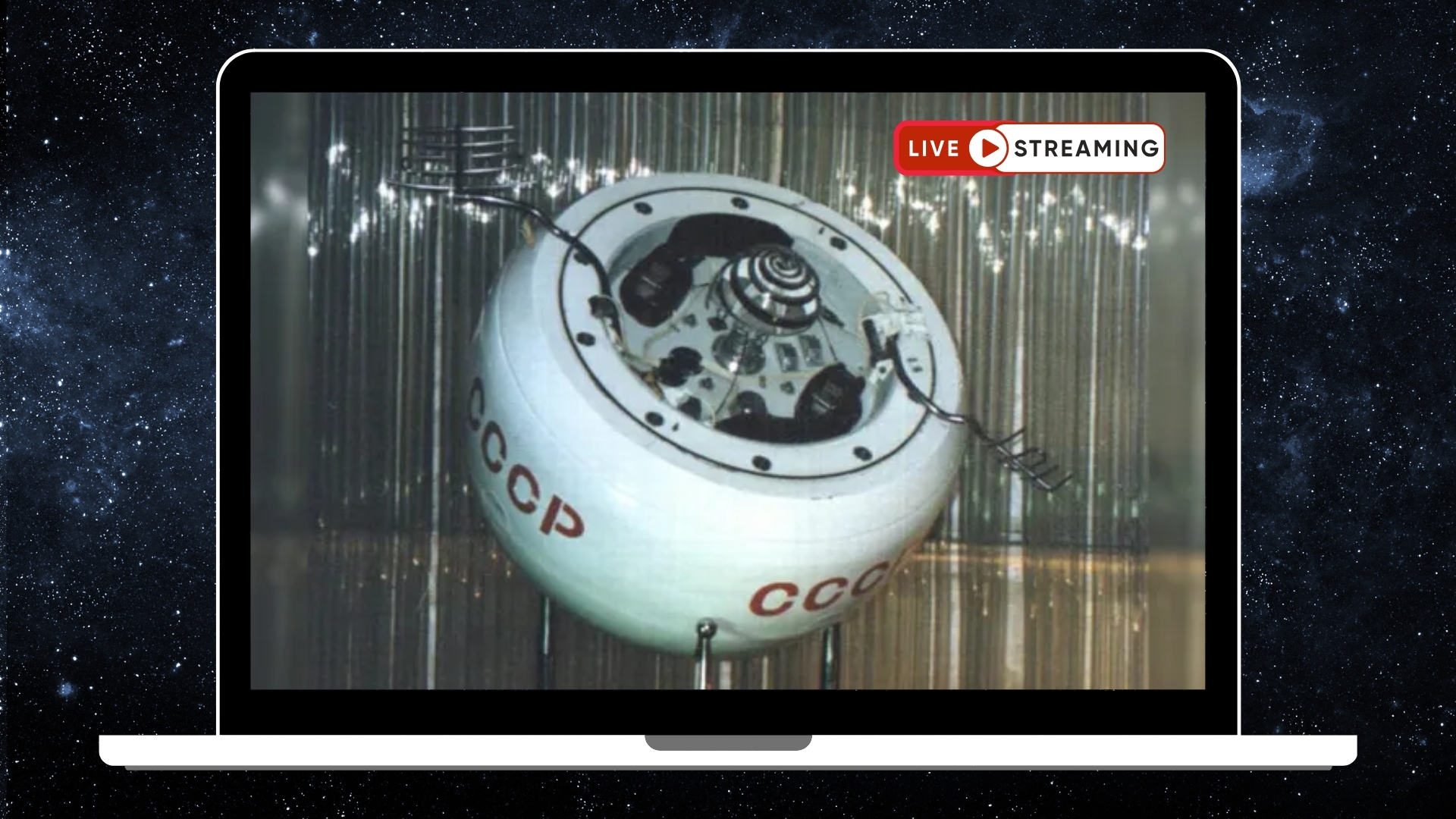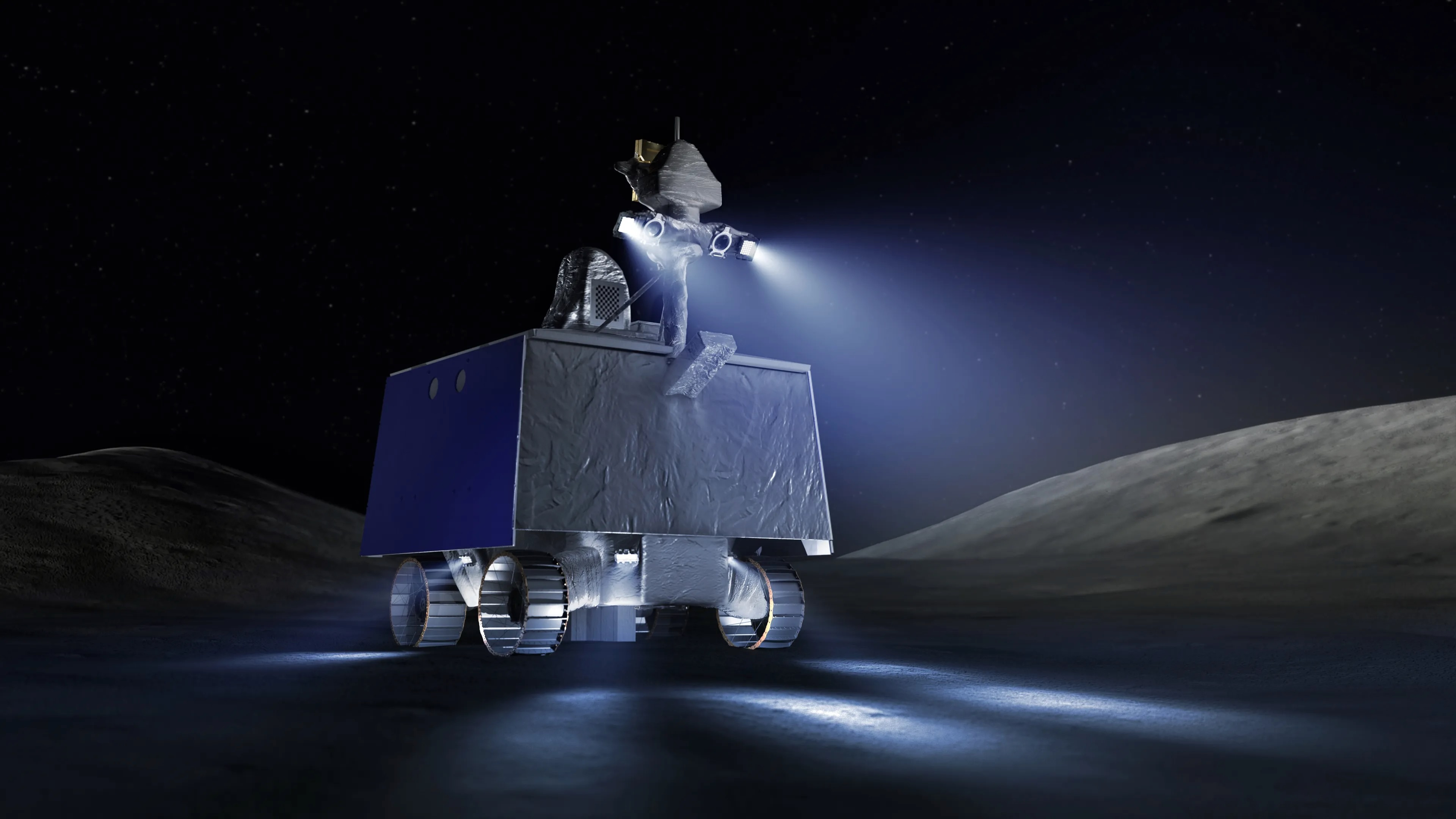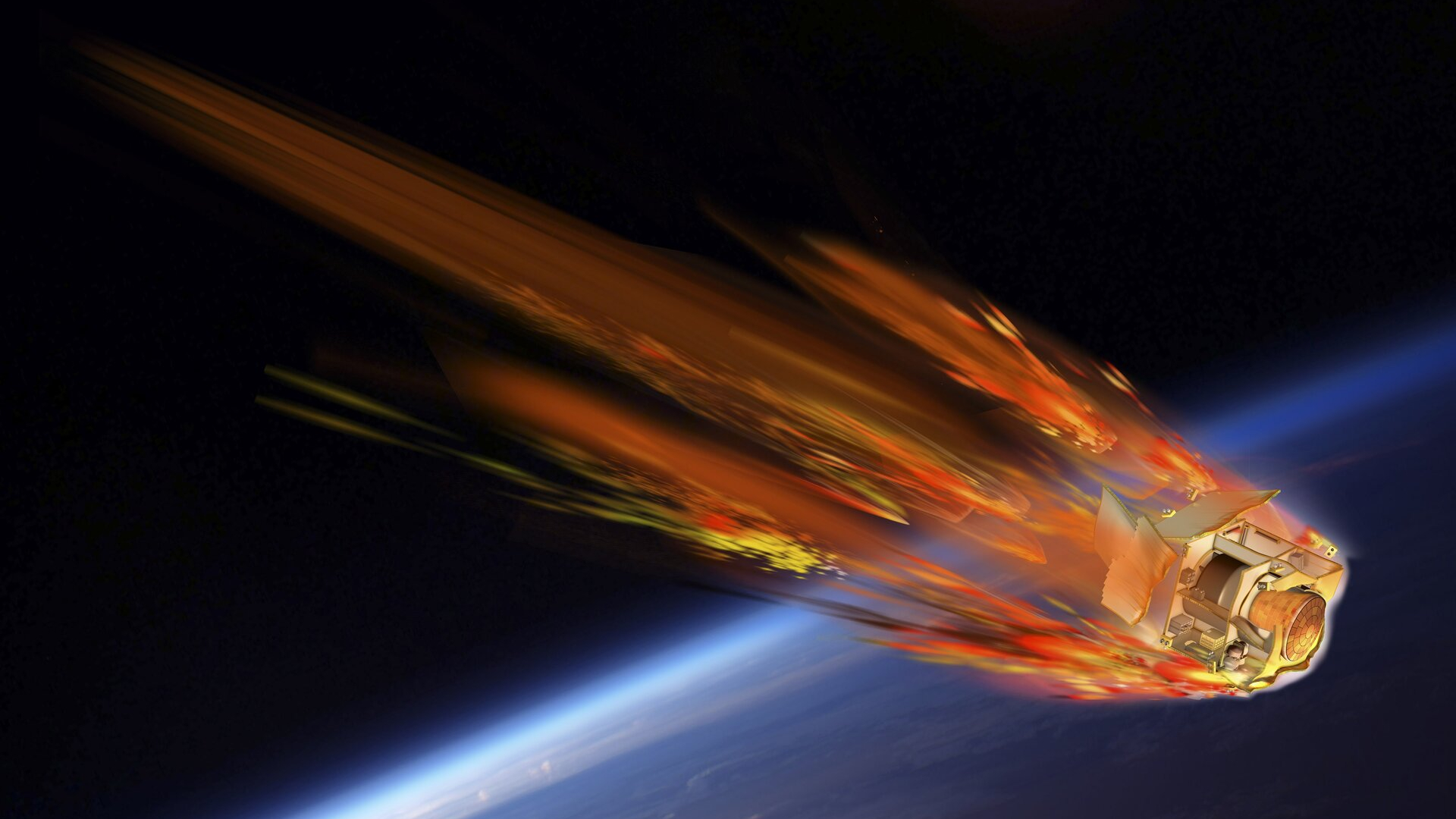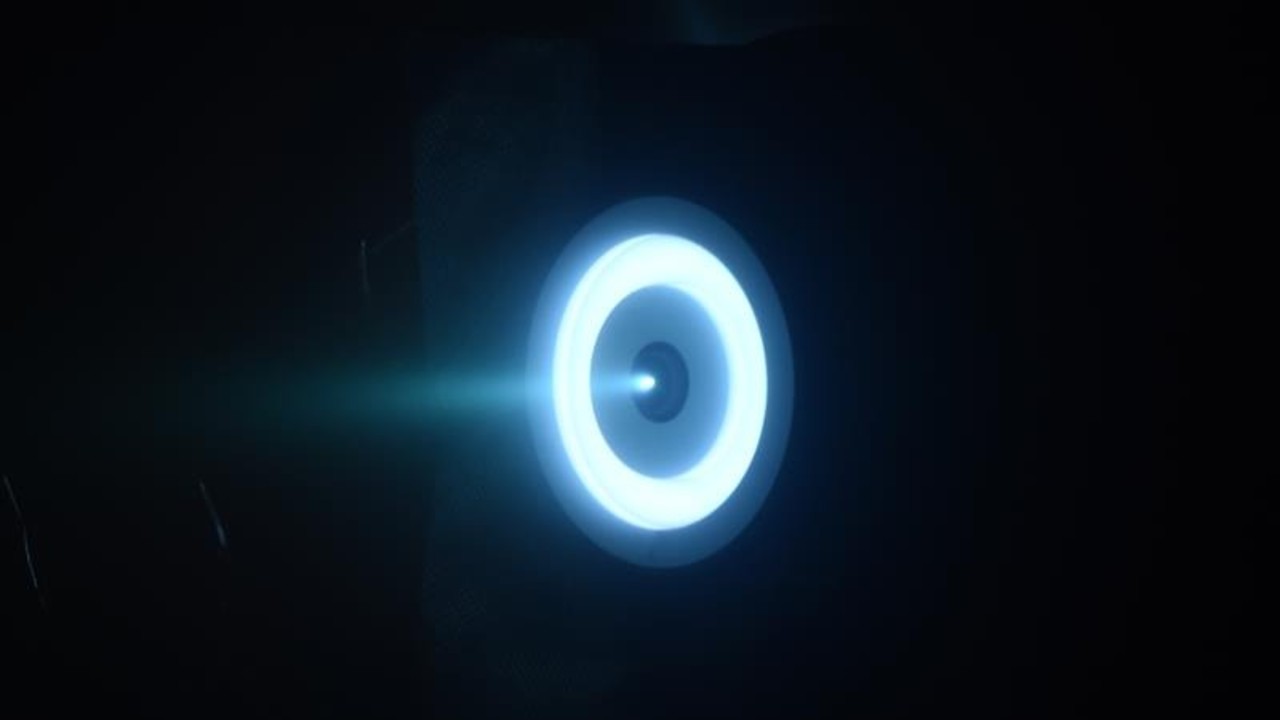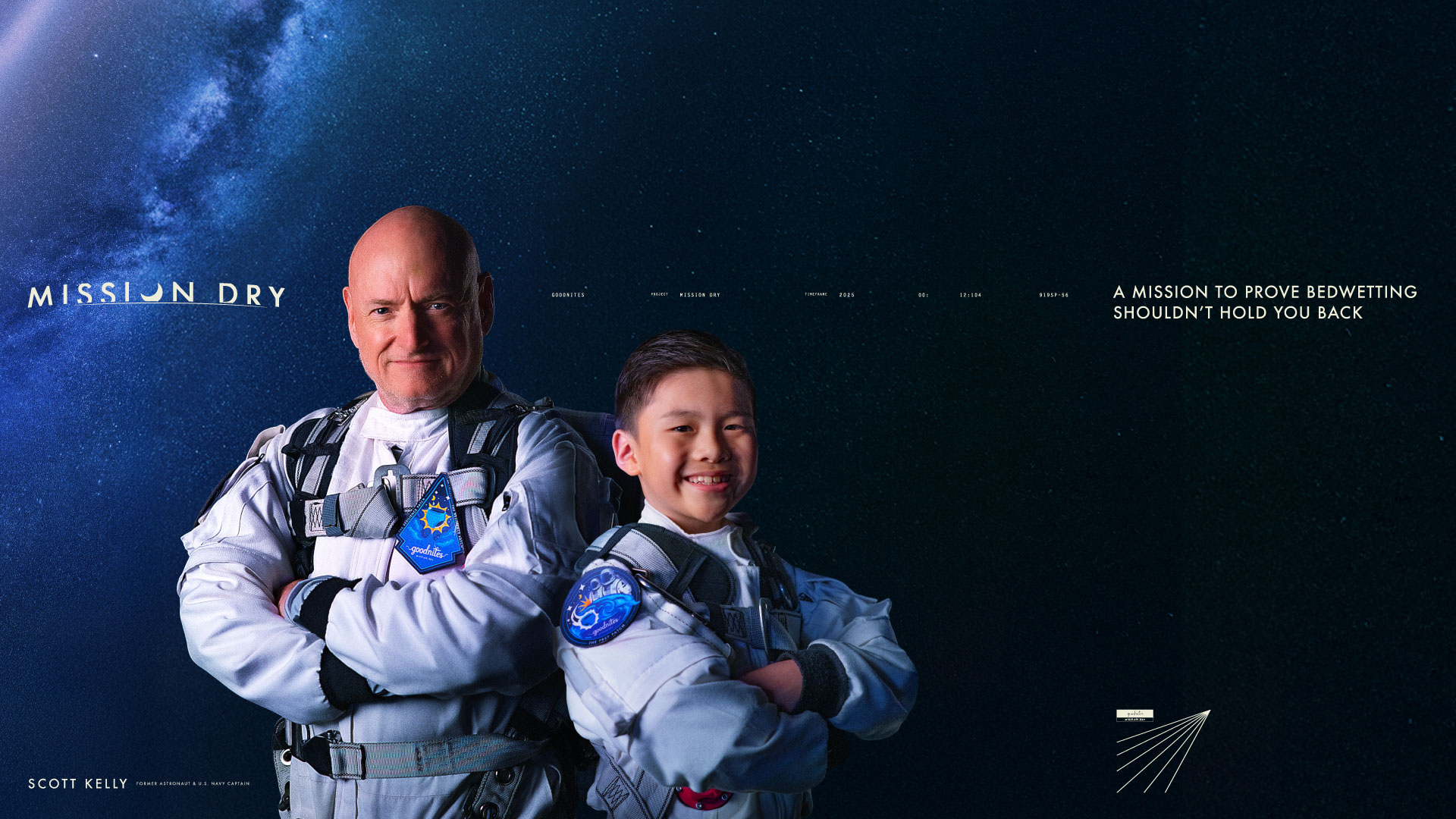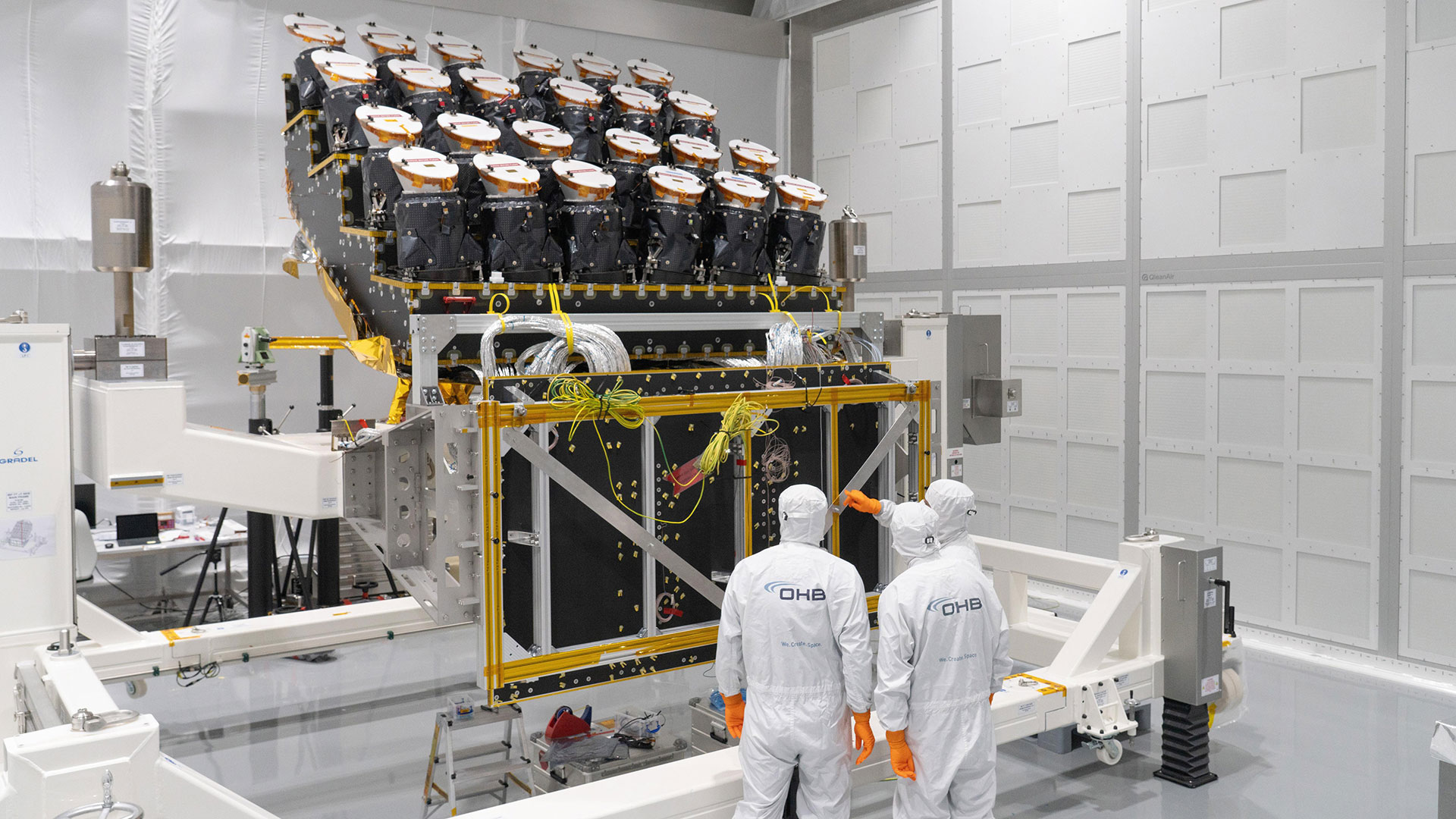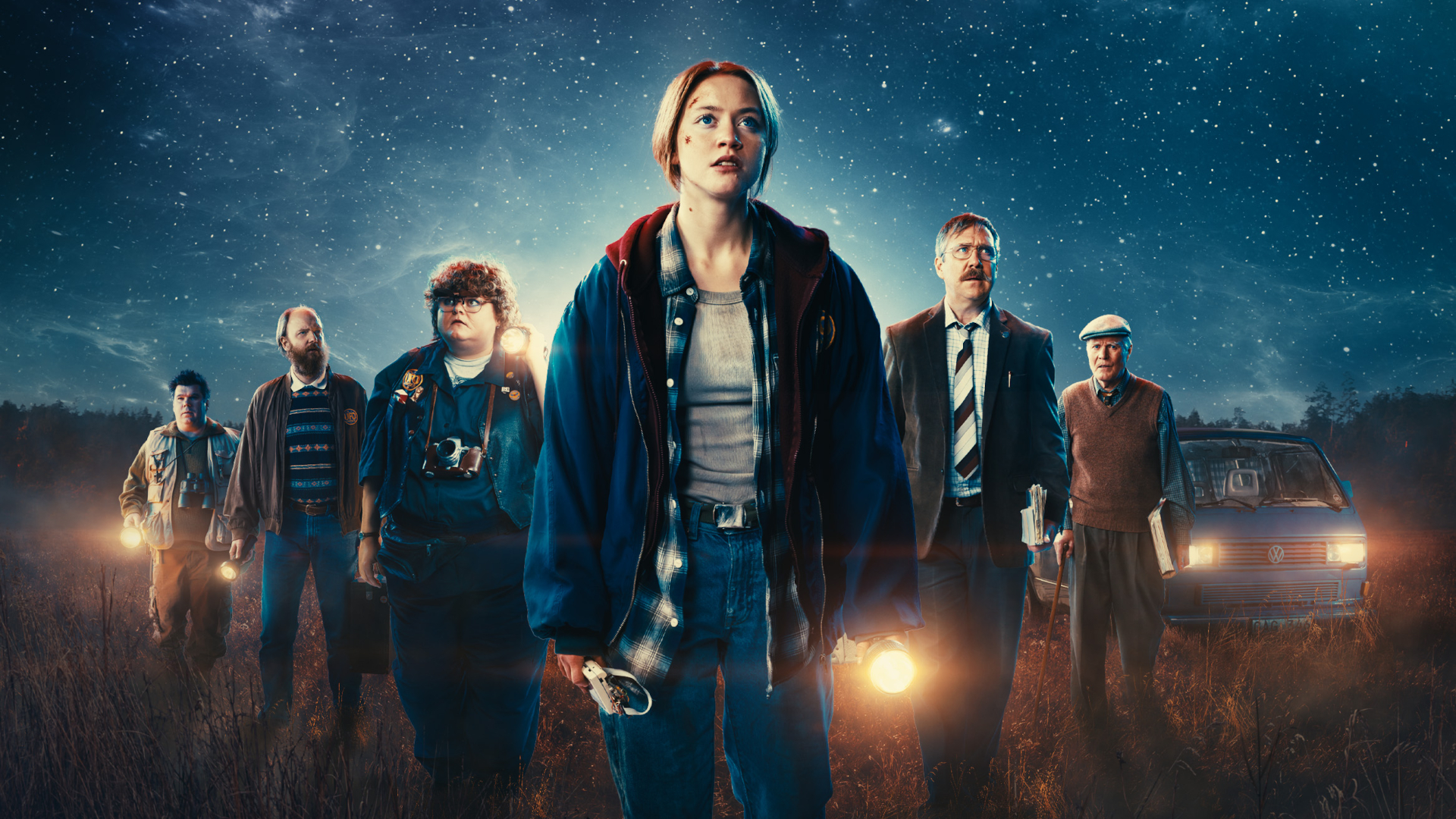Astronotes: May 30 - June 12, 2004
June 11
Hunting for Martian Water in 3-D
The three-dimensional images of Mars snapped by NASA's Spirit and Opportunity rovers can be a fun novelty for non-scientists, but they help researchers learn the lay of the Martian land and at least one university has began using the pictures to teach students.
At the Visualization Laboratory at Northwestern University in Chicago, Illinois, students don 3-D glasses to gain a better understanding of Martian astronomy and geology.

The Visualization Laboratory turned raw Mars images provided by NASA's Jet Propulsion Laboratory in Pasadena, California into teachable material using computer programs designed to align and view stereo photographs. In addition to the Mars images, the laboratory is also developing three-dimensional views of the Eros 433 asteroid visited by NASA"s Near Earth Asteroid Rendezvous Spacecraft (NEAR), as well as dense clusters of stars and galaxies.
-- SPACE.com Staff
June 10
Get the Space.com Newsletter
Breaking space news, the latest updates on rocket launches, skywatching events and more!
Buckle Up! Rough Air Ahead
A new radar system that sniffs out dangerous turbulence for commercial aircraft may soon help prevent in-flight injuries and reduce airsickness to an unhappy memory in a paper bag for passengers.
Researchers with NASA's Langley Research Center and Atlanta-based Delta Air Lines are putting their Turbulence Prediction and Warning System (TPAWS) radar to the test this summer on regular flights between the United States and South America aboard a Boeing 737 passenger aircraft. The turbulence system, they hope, will help flight crews steer around rough weather or warn passengers to stay in their seats, buckle up their safety belts and hopefully keep dinner in their stomachs.
TPAWS' enhanced radar seeks out air turbulence by tracking moisture as it moves through stormy air. The system has already shown itself to be more accurate then the typical Doppler and weather radar aboard a research aircraft, and the Federal Aviation Administration (FAA) will evaluate TPAWS' performance on commercial flights over the next nine months.
Turbulence due to weather is the leading cause of injuries to passengers and flight crews in non-fatal aircraft accidents. About 58 passengers aboard U.S. airlines are hurt each year due to such accidents, most of which occur when people don't have their seatbelts buckled, according to FAA statistics.
The project is part of NASA's Airline Safety and Security Program.
-- Tariq Malik
June 9
Ex-NASA Chief Richard Truly Retiring
GOLDEN, Colo. (AP) -- Richard Truly, a former astronaut and NASA administrator who has headed the National Renewable Energy Laboratory since 1997, said Tuesday he will retire in November.
The lab, owned by the Department of Energy, develops renewable energy and energy-efficient technology.
Truly, 66, was NASA's chief from 1989 to 1992 under President George H. W. Bush. As associate administrator for space flight, he led NASA's investigation of the 1986 explosion of the space shuttle Challenger.
Truly flew on two space shuttle missions, as a pilot in 1981 and commander in 1983. He retired from the Navy as a vice admiral.
Kansas City-based Midwest Research Institute, which manages the lab with Battelle Science & Technology International, will begin a search for a new director.
-- Associated Press
June 7
China Spells Out Lunar Plans
One of China's top lunar scientists, Ouyang Ziyuan, has reiterated that country's multi-phase robotic plans to study the Moon out to the year 2017.
Speaking before the 12th conference of the Chinese Academy of Sciences (CAS) on June 6 in Beijing, Ouyang said China has a three-step plan for lunar exploration. First, an orbiter -- Chang'e I (named after a fabled fairy who flew to the Moon) - would be launched.
Chang'e I would precisely chart the Moon in 3D, scouting out mineralogical elements, including helium-3 through remote instruments. Environmental, topographical, and other geological data would also be amassed by the lunar orbiter, Ouyang noted.
A second phase of lunar study is to develop an automated lander to acquire more detailed information on the Moon, Ouyang said. A third phase would involve a robotic craft landing on the Moon, specially designed to snag and then return samples to Earth, he added.
After the three phases, Ouyang said, China would consider how and when to launch a piloted Moon mission, according to an account of the scientist's talk in People's Daily Online. He was identified as a senior researcher at the national observatory.
In the same report, Ye Peijian, a CAS academician, said Moon exploration is a vital step for China after it successfully launched its first person into space.
Ye said that there are several technological obstacles for lunar exploration, such as space probe control, data transmission, navigation, as well as spacecraft heat and power issues.
Ouyang explained that, in recent years, developed countries have recast their intent in exploring the Moon. "They have more specific goals in building bases on the Moon," he said.
"The Moon belongs to nobody, but pace-makers could undoubtedly benefit," Ouyang said.
-- Leonard David
June 4
Heading to Saturn: Four Hot Numbers
When the Huygens space probe lands in Saturn's largest moon, Titan in January it will deliver four songs recorded back in 1997 before the mission launched.
Nobody will be there to listen, but mission officials conceived the idea to help raise interest in the mission among young people. The probe is a project of the European Space Agency and it is piggybacked on NASA's Cassini spacecraft, which goes into orbit around Saturn later this month.
The music was composed by French musicians Julien Civange and Louis Haeri. The scheme, called Music2Titan, represents furthest distance at which human-made sounds will have landed on another celestial body.
The four songs, "Hot time", "Bald James Deans", "Lalala" and "No love" were recorded at the Sony Studios in New York City under the direction of producer Kirk Yano.
"Music2Titan reflects our will to embellish Earth and space with unconventional artistic projects, as well as to familiarize youngsters with space missions and the search for traces of extraterrestrial life, communicate about space science outside a scientific framework, and disseminate dreams," Civange said.
The songs can be heard here.
-- SPACE.com Staff
June 3
SOHO Spots Venus Nearing the Sun
Venus is drawing closer to the Sun from our perspective as it nears a rare event June 8, when it will cross in front of the Sun. Venus is now disappearing from the evening sky and has just entered the view of the orbiting SOHO spacecraft.
The planet is entering the field of view from the left. The Sun's main disk is blocked out by a device in the spacecraft's camera that allows it to see the solar atmosphere and other nearby objects that would otherwise be overpowered by the bright light.

However, Venus will be visible against the emission from the diffuse solar atmosphere, or corona. Scientists will be able to take advantage of this Venus transit to improve the quality of data gathered by SOHO, officials said in a statement today.
Other telescopes will webcast the transit live from planet Earth. For a complete list of webcasts, plus when and how to safely view the event yourself, see SPACE.com's Venus Transit Headquarters.
Interested viewers can watch Venus' progress starting now in regularly updated images on the SOHO site.
-- Robert Roy Britt
June 2
Small Satellite: Big Views
Hurled into space in October 2001, the European Space Agency's Proba micro-satellite has been busily clicking away - relaying up-close imagery of major landmarks on Earth. The snapshots have been taken by an extremely compact high resolution camera system.
Proba -- Project for On Board Autonomy -- is the size and shape of a small washing machine. The micro-satellite was originally created as a technology demonstration mission, and has a high degree of onboard autonomy. Its 'intelligent' payload and has the ability to observe the same spot on Earth from a number of different angles and different combinations of optical and infra-red spectral bands.
Operators on the ground send up the raw inputs of a target to be imaged -- latitude, longitude, and altitude -- and Proba itself does the rest.
Proba keeps track of its orbital position with a Global Positioning System (GPS) receiver - no big deal. What's innovative is that the tiny spacecraft supplements GPS with an onboard star tracker system called the Advanced Stellar Compass (ASC).

Proba was designed to be a one-year technology demonstration mission of ESA but has since had its lifetime extended as an Earth Observation mission. A follow-on mission, Proba-2, is due to be deployed by ESA around 2005.
-- Leonard David
June 1
Set Phasers on Scan
It may look like a phaser from Star Trek - and even spit radiation - but NASA researchers assure that their latest tool is not an instrument of destruction. The pistol-shaped piece of equipment is actually meant to prevent accidents by verifying that the materials used to build spacecraft are made of the right stuff.
The straightforwardly-named Vacuum Enhanced X-ray Fluorescent Scanner is a portable device used to determine the integrity of aluminum spacecraft materials, such as the composite alloy skin of an external tank for NASA's space shuttle, to be sure they don't contain substandard components that could affect spacecraft performance in the future.
The four-pound (1.8-kilogram) handheld analyzer uses three weak X-ray beams to make material composition measurements. Since the X-ray beams are so weak that ordinary air would block them, the scanner is pressed against a target and generates a vacuum between the two to allow an accurate measurement.
"It's very handy," said Fred Schramm, technology utilization manager with the Technology Transfer Department at NASA's Marshall Space Flight Center in Huntsville, Alabama. "Other than this instrument, we don't really have any ways of doing these analyses in the field."

NASA officials at the Kennedy Space Center in Cape Canaveral, Florida are currently investigating whether the scanner could be used on launch pads during hardware checks, Schramm said.
-- Tariq Malik
Missed something from last week? Astronotes Archive
Join our Space Forums to keep talking space on the latest missions, night sky and more! And if you have a news tip, correction or comment, let us know at: community@space.com.

Space.com is the premier source of space exploration, innovation and astronomy news, chronicling (and celebrating) humanity's ongoing expansion across the final frontier. Originally founded in 1999, Space.com is, and always has been, the passion of writers and editors who are space fans and also trained journalists. Our current news team consists of Editor-in-Chief Tariq Malik; Editor Hanneke Weitering, Senior Space Writer Mike Wall; Senior Writer Meghan Bartels; Senior Writer Chelsea Gohd, Senior Writer Tereza Pultarova and Staff Writer Alexander Cox, focusing on e-commerce. Senior Producer Steve Spaleta oversees our space videos, with Diana Whitcroft as our Social Media Editor.
